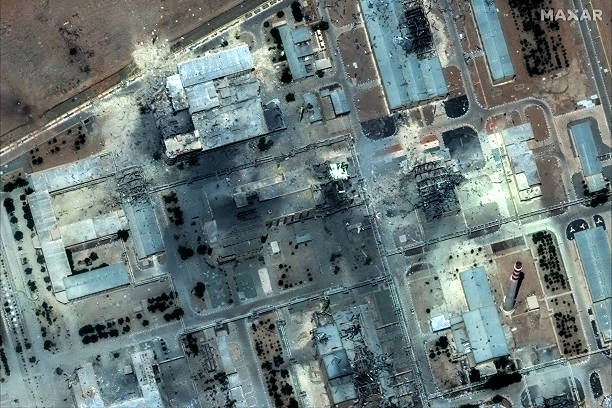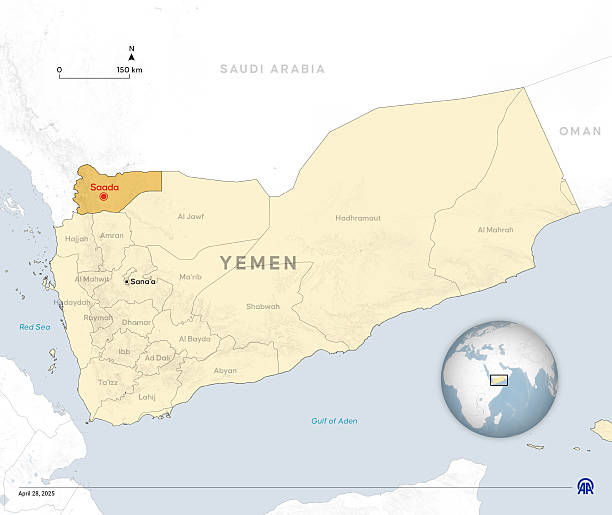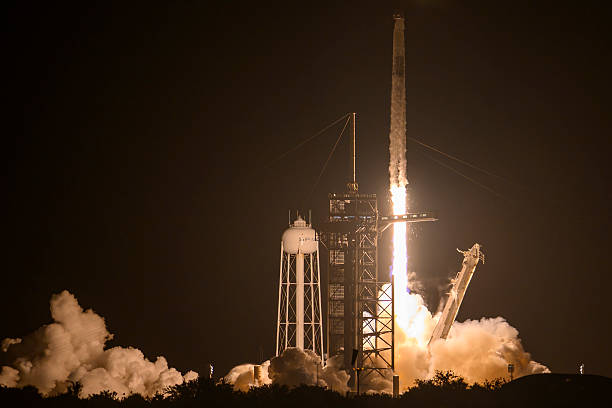U.S. Intelligence Report Contradicts Trump’s Claim of Total Destruction of Iran’s Nuclear Program
U.S. intelligence reports that recent American airstrikes only temporarily delayed Iran’s nuclear program, contradicting President Trump’s claims of its total destruction.
 Axiom Space To Launch Mission 4 To The International Space Station
Axiom Space To Launch Mission 4 To The International Space StationA classified U.S. intelligence assessment suggests Iran’s nuclear program has only been temporarily delayed — not destroyed — by recent American airstrikes, contradicting President Donald Trump’s and Israeli Prime Minister Benjamin Netanyahu’s public assertions that the facilities were “totally obliterated,” according to two people familiar with the report.
The report, issued by the Defense Intelligence Agency (DIA) on Monday, concludes that the U.S. strikes on the Fordo, Natanz, and Isfahan nuclear facilities inflicted significant damage but failed to eliminate Iran’s nuclear infrastructure entirely. Sources, speaking anonymously due to the sensitivity of the material, noted that parts of Iran’s highly enriched uranium stockpile were likely moved before the attack and survived. Iran’s centrifuge equipment also remains largely intact.
At Fordo, where B-2 stealth bombers dropped multiple 30,000-pound bunker-buster bombs, DIA analysts found the entrance collapsed and some infrastructure damaged, but the deeply buried enrichment tunnels remained largely undestroyed. Intelligence officials reportedly warned before the operation that such an outcome was possible.
The White House swiftly rejected the DIA findings, labeling the assessment “flat-out wrong.” Press Secretary Karoline Leavitt said, “Everyone knows what happens when you drop fourteen 30,000 pound bombs perfectly on their targets: total obliteration.” She accused the leakers of trying to undermine Trump and the U.S. pilots involved in the mission.
CIA and Office of the Director of National Intelligence officials declined comment, while Israel has yet to issue a formal evaluation of the attack’s effectiveness.
Steve Witkoff, Trump’s special envoy, who claimed to have reviewed multiple intelligence assessments, said Tuesday that the mission had definitively disabled Iran’s capacity to build a nuclear weapon. He condemned the leak of the DIA report as “treasonous” and called for an investigation.
Trump, repeating his stance in recent public statements, said Iran’s nuclear facilities had been “totally destroyed” and asserted that the country would never rebuild its nuclear capabilities. Netanyahu also praised the strikes, calling the joint U.S.-Israeli effort “historic” and claiming it fulfilled a decades-long promise to halt Iran’s nuclear ambitions.
Experts and satellite imagery analysis suggest otherwise. Maxar Technologies observed trucks and bulldozers at the Fordo site days before the strikes, fueling speculation that Iran had preemptively moved uranium and equipment. Imagery later showed that tunnel entrances had been sealed with dirt before the bombing.
Eric Brewer, a former U.S. intelligence official and now a deputy vice president at the Nuclear Threat Initiative, said it was plausible that Iran relocated enriched uranium and even centrifuges ahead of the attack, although the latter are harder to transport without damage. He warned the incomplete destruction of sites could still allow Iran to resume its enrichment activities covertly.
Iran, which has long claimed its nuclear program is for peaceful purposes, is believed to have enriched significant uranium quantities well beyond civilian use levels. The IAEA has warned that Iran possesses enough enriched material to potentially build several bombs if it chose to pursue weaponization.
Vice President JD Vance defended the operation on Fox News, stating that even if Iran retains its 408.6 kilograms of 60% enriched uranium, it lacks the capacity to enrich it further to 90% or weaponize it, thereby achieving the mission’s objective.
“If they have 60% enriched uranium, but they don’t have the ability to enrich it to 90%, and, further, they don’t have the ability to convert that to a nuclear weapon, that is mission success,” Vance said.
Theoretical calculations by the U.N. nuclear watchdog indicate that approximately 42 kilograms of 60% enriched uranium, if further enriched, could yield one atomic bomb.
Iranian Foreign Minister Abbas Araghchi had informed IAEA Director General Rafael Grossi on June 13 — the day Israel began its military campaign — that Tehran was adopting “special measures” to protect its nuclear materials. These may have included sealing tunnels and relocating critical components.
Arms Control Association expert Kelsey Davenport said that if Iran had successfully diverted its centrifuges, it could use its 60% uranium to fuel a small, covert enrichment facility and quickly reach weapons-grade levels.
Though the strikes have damaged Iran’s infrastructure and likely delayed its progress, experts argue the country retains a solid foundation to reconstitute a covert nuclear weapons program. Brewer emphasized that despite setbacks, Iran could still pose a nuclear threat in the future — albeit at a disadvantage due to the loss of personnel and equipment from the joint U.S.-Israeli bombardment







Conversation